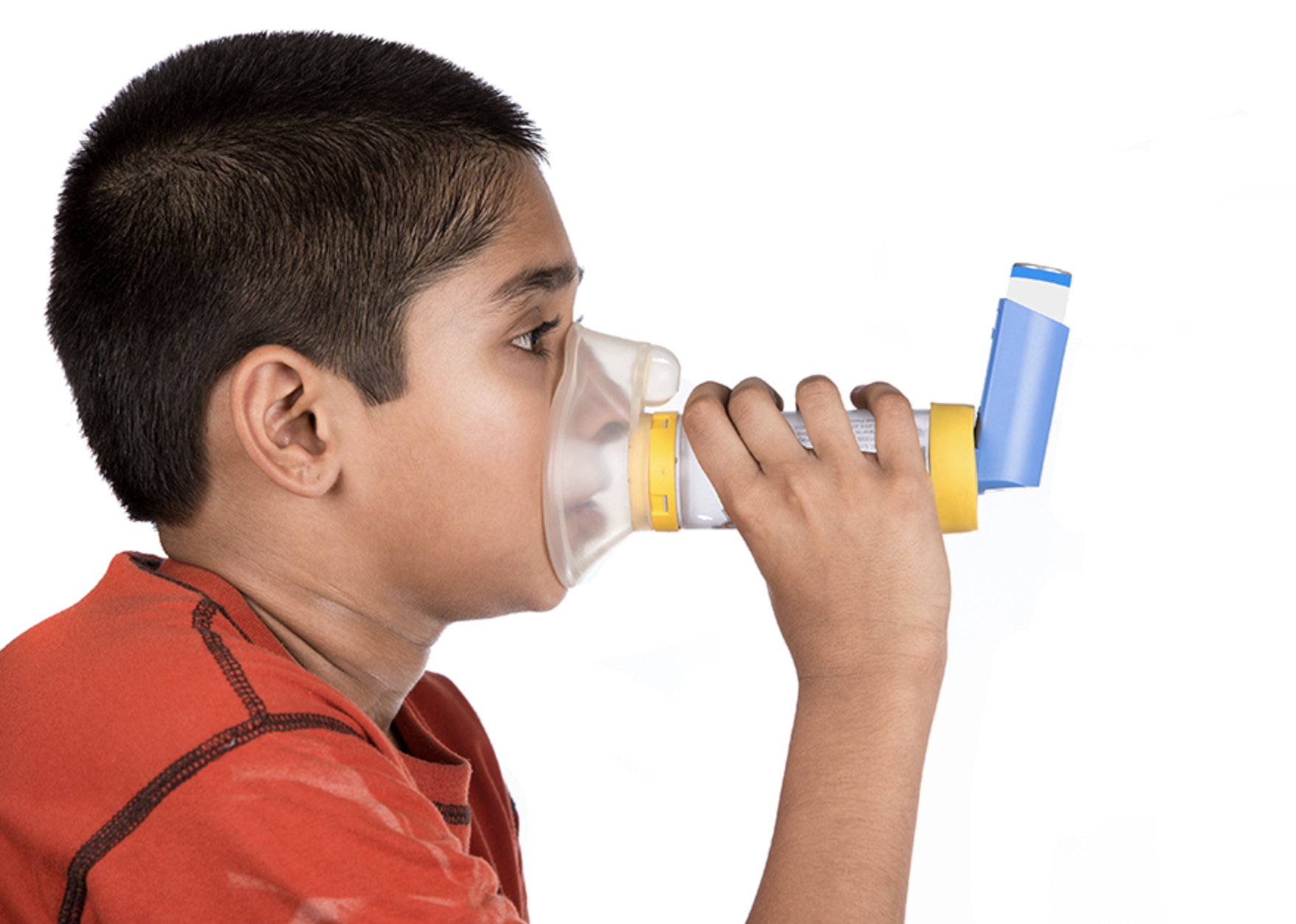Valved holding chambers (VHCs) and spacers extend the mouthpiece of the inhaler and direct the cloud of medication toward the throat, reducing the amount of medication released into the air or inside the mouth.
A spacer does not suspend the medication, so you must still coordinate your breath to begin slightly before actuating the MDI. However, a valved holding chamber uses a one-way valve to trap and suspend particles of medication long enough to be inhaled over a period of a few seconds. Holding chambers are available for use with and without masks sized for infants to adults.
Why Should I Use a Valved Holding Chamber or Spacer with My Inhaler?
Inhaled medications target inflamed and congested airways directly, but getting them deep into the lungs depends on the user’s ability to position and depress the metered-dose inhaler (MDI) a split second after beginning a slow, deep inhalation. Sounds easy, but when the dose of medicine leaves the inhaler at about 60 miles an hour, a lot can be lost to the air or stuck to the top of the tongue, sides of the cheeks, or back of the throat and swallowed before making it to the airways.
Spacers built into the MDI (as Aerospan) are designed, tested and approved by FDA as a unit. Add-on units that require you to remove the MDI canister from the manufacturer’s boot and insert it into a special port, may or may not affect product performance. Valved holding chambers are fitted with a universal rubber end piece that accommodates the MDI without having to remove the canister from the boot, allowing the MDI to function as approved by FDA.

How do I use a valved holding chamber?
- Always read and follow the manufacturer’s instructions.
- Check the chamber’s insertion port to make sure it is clean and free of any small particles. Shake and prime the MDI according to instructions, then insert the mouthpiece into the holding chamber port.
- Hold the chamber mouthpiece between your teeth, keeping your tongue out of the way, and close your lips around it. Actuate the inhaler, inhale slowly and deeply, then hold your breath for 10 seconds. Remove the chamber from your mouth, exhale, and repeat the entire process for the second puff. (You can leave the MDI in place for shaking, if necessary.)
When using a mask
Place the mask tightly on the face and allow the user to breathe normally. When the mask fits properly, you will be able to see the valve open and shut as the user breathes. Actuate the MDI as you see the user begin to take a breath, then keep the chamber in place while they breathe in and out several times. For a second dose (if prescribed), remove the holding chamber mask from the face, shake the MDI/chamber unit, replace the mask on the face and repeat the activation/inhalation process.
Never spray two puffs of medication into a holding chamber at one time. Ask your physician or pharmacist about how much time to allow between puffs of medication. - Clean the holding chamber according to the manufacturer’s instructions or when the unit becomes cloudy or filmy inside. Make sure it has a chance to air-dry completely before the next dose is needed.
- Replace disposable parts as recommended to avoid bacterial growth.
- Use a permanent marker to note the purchase date of the holding chamber on the side of the device. Discard your unit when advised in the package instructions or if the unit fails to operate as expected. Most insurance plans will cover one device per year.
Patient education resources from Allergy & Asthma Network

© 2021 Allergy and Asthma Network
Last updated : 6/24/2024